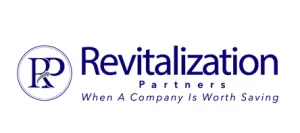Markets have a way of revealing what balance sheets try to hide.
The recent sell-off in regional banks and financial institutions isn’t just about earnings—it’s about confidence. Rising loan losses are beginning to surface across portfolios that, for the past few years, looked resilient. The underlying message: the credit cycle has turned, and lenders are adjusting accordingly.
This shift isn’t dramatic, but it’s deliberate. Renewals are taking longer. Advance rates are tightening. Credit committees are rediscovering words like “discipline” and “recoverability.” What we’re seeing now is the early normalization of risk after years of liquidity masking fragility.
The Early Signals of Stress
 In any credit cycle, deterioration shows up first in the middle market. Companies that expanded under low-rate conditions are now facing higher input costs, slower collections, and constrained cash flow.
In any credit cycle, deterioration shows up first in the middle market. Companies that expanded under low-rate conditions are now facing higher input costs, slower collections, and constrained cash flow.
What was once manageable leverage is becoming structural strain.
For lenders, the signs appear gradually: aging receivables, delayed audits, and collateral revaluations that no longer pencil out. None of these on their own trigger panic—but together, they form the outline of an industry stepping back from aggressive lending posture.
The key difference this time is that the warning signs are coming sooner. Lenders who learned hard lessons from the last downturn are moving faster to protect their positions.
When Liquidity Masks Weakness
The years of abundant capital created a kind of financial anesthesia—problems were easy to refinance, not solve. That era is over.
As liquidity tightens, weaknesses that were hidden by rolling credit or soft covenants are becoming visible. What seemed like a short-term liquidity issue in Q2 may, by Q4, look like a solvency problem.
Credit discipline isn’t about pessimism; it’s about seeing reality before it’s priced in. It’s also about acting early enough to preserve value before defaults cascade.
Receivership as a Stabilizing Option
 When a borrower’s position starts to unravel, the lender’s instinct is often to wait for clarity. Unfortunately, waiting can destroy the very value that creditors are trying to protect.
When a borrower’s position starts to unravel, the lender’s instinct is often to wait for clarity. Unfortunately, waiting can destroy the very value that creditors are trying to protect.
Receivership, when used correctly, provides a structured middle ground between cooperation and collapse.
It allows a neutral third party to:
-
Take immediate control of assets and cash flow.
-
Keep operations running while ownership and financing disputes are resolved.
-
Maintain transparency for all parties through objective reporting.
-
Protect creditor value by managing the asset before deterioration becomes terminal.
Receiverships are not punitive—they are preventive. They transform chaos into order and preserve value that would otherwise vanish in litigation or liquidation.
Credit Discipline Returns
The market’s recent volatility isn’t a crisis—it’s a recalibration.
Credit cycles don’t end; they reset. As rates stay high and liquidity recedes, lenders and investors are shifting from yield chasing to capital preservation. That’s a healthy correction, and one that ultimately strengthens the system.
For creditors, this is the moment to re-examine portfolios, refresh valuations, and reinforce early warning mechanisms.
The institutions that do so will emerge from this phase not weaker—but sharper, more disciplined, and better positioned for the next upturn.
The takeaway: rising loan losses aren’t a surprise—they’re a signal.
And for lenders who act early, structure carefully, and enforce credit discipline, that signal doesn’t mark the end of a cycle.
It marks the return to sound lending fundamentals.


